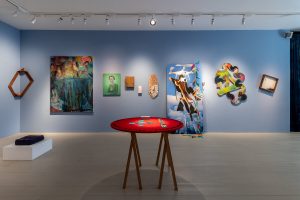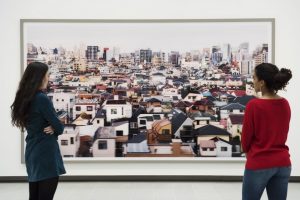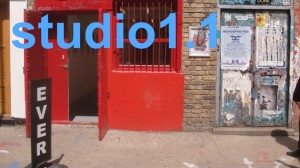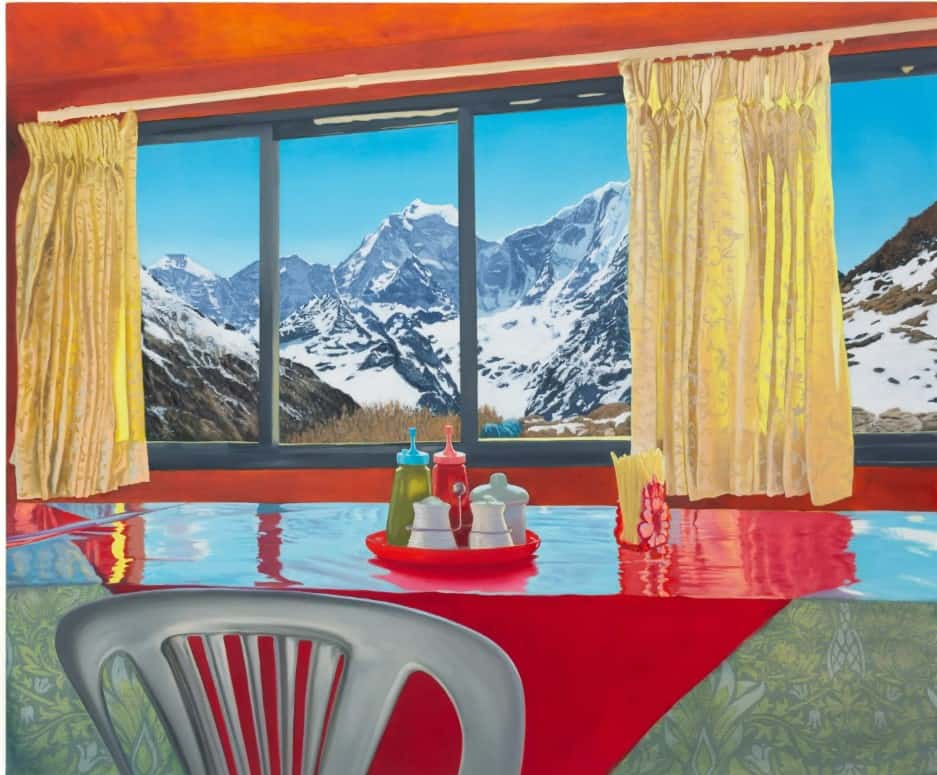
Painting sounds like a nice easy job: roll into the studio when your hangover allows, slosh a few colours around until you see something you like, then celebrate with another drink. Beats the project management required to make films; or the material sourcing, labour and heft of sculpture; let alone the disciplines of a real job…
My suspicion that the practice isn’t necessarily so conducive to idleness was confirmed by Benjamin Deakin’s recent show at JGM Gallery (6 April-14 May). The route to what we saw displayed was more like:
- Travel to the Himalayas to trek around Nepalese tea houses, inspired by how they provide the sense of being ‘in multiple places at once’
- Make a thorough photographic documentation
- Return to the studio to develop a painterly language to make the most of the strange combination of Buddhist traditions, plastic tablecloths, tomato ketchup and spectacular mountain views through the window, channelling Patrick Caulfield and William Eggleston into the mix
- Make an innovative edition of 15 (based on ‘Emantor’) featuring a method of printing on top of paint
- Design an installation complete with a hand-printed wallpaper in one section to evoke the interiors
- Explain your thinking for the catalogue
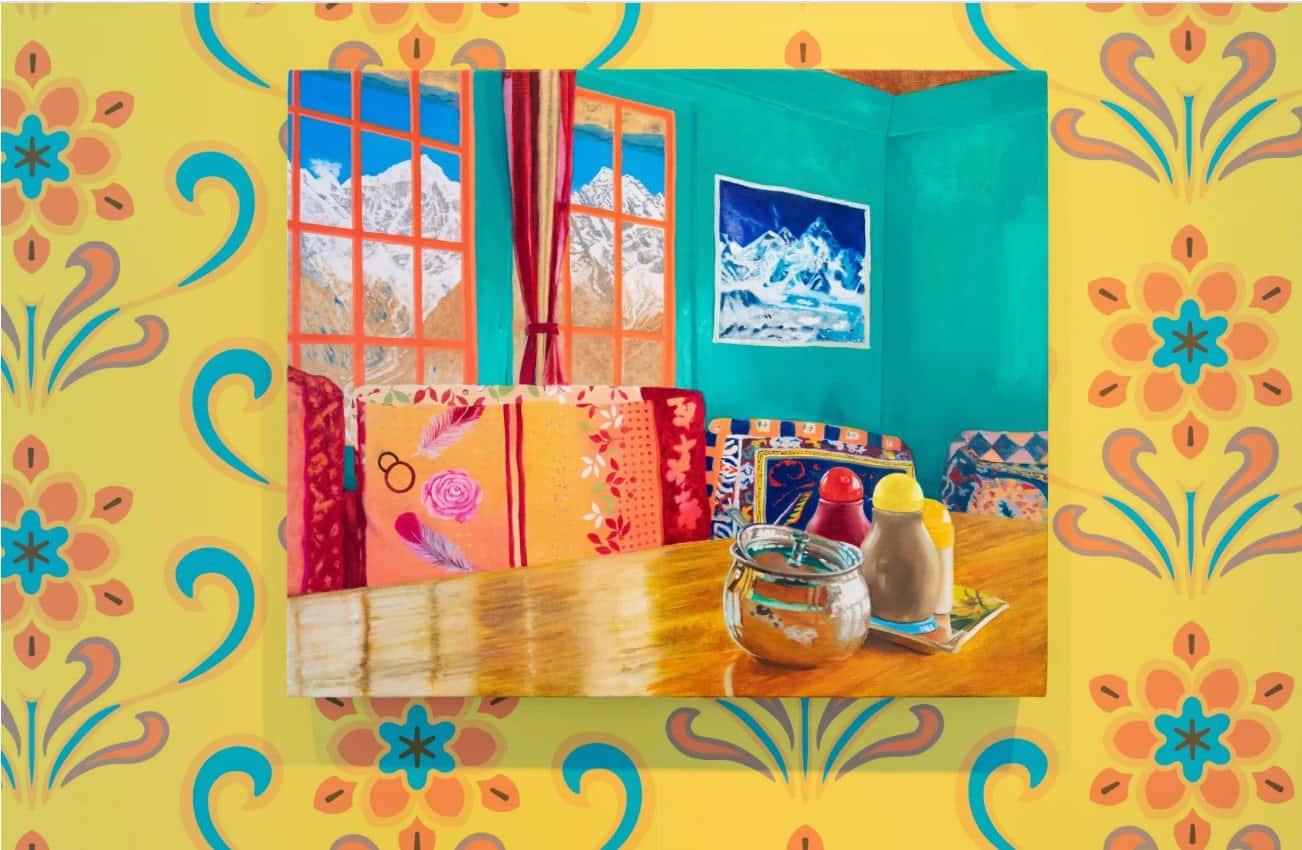
In Deakin’s case, he also took photographs to document his own show for the gallery. The other factor undermining the easy-going lifestyle is that almost all painters have to find another source of income to keep going: assisting a famous artist, working as a gallery technician or teaching art are the classics. In Deakin’s case, he’s well known as a professional photographer of exhibitions.
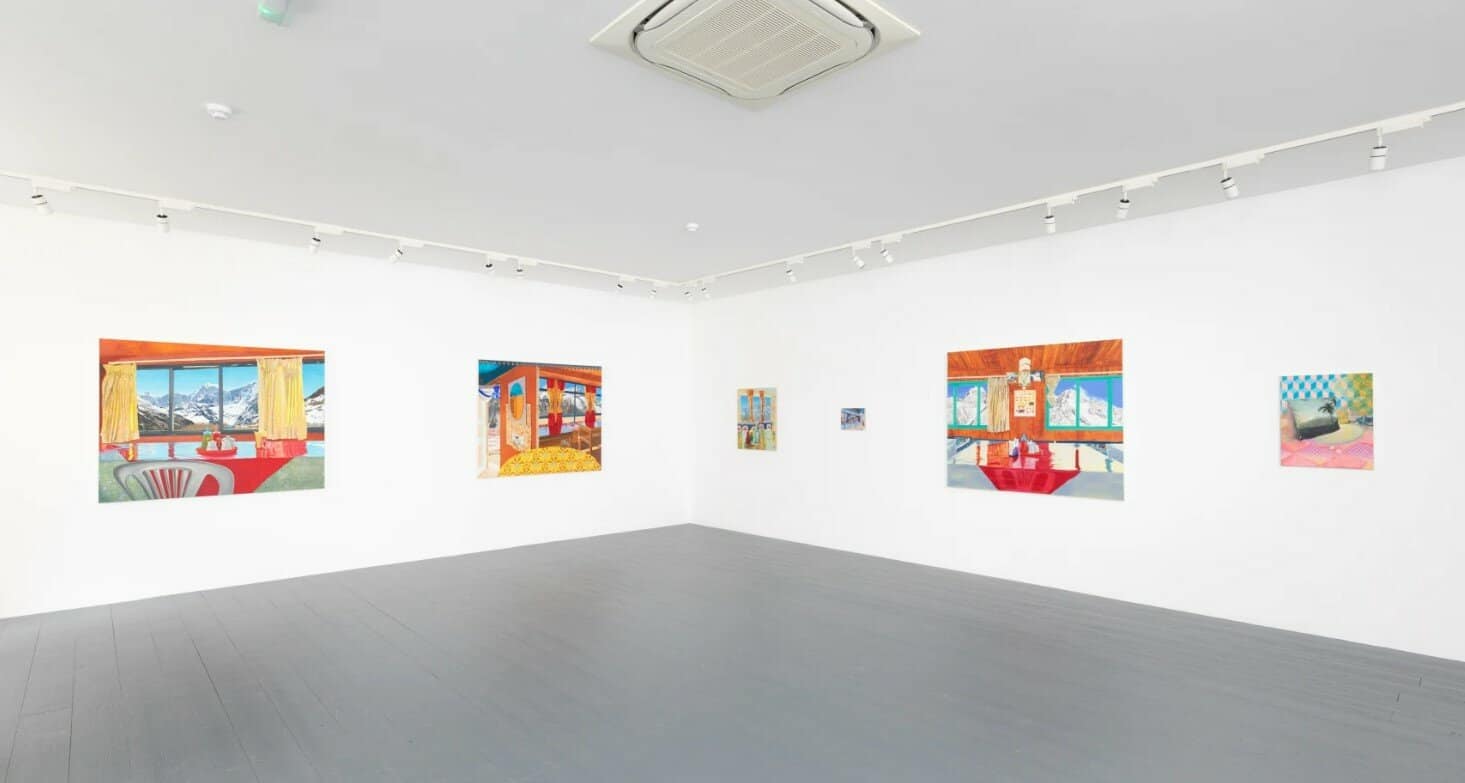
Quite hard work, then, being a painter. In this case, though, the glowing and distinctive results were well worth it.
Art writer and curator Paul Carey-Kent sees a lot of shows: we asked him to jot down whatever came into his head

